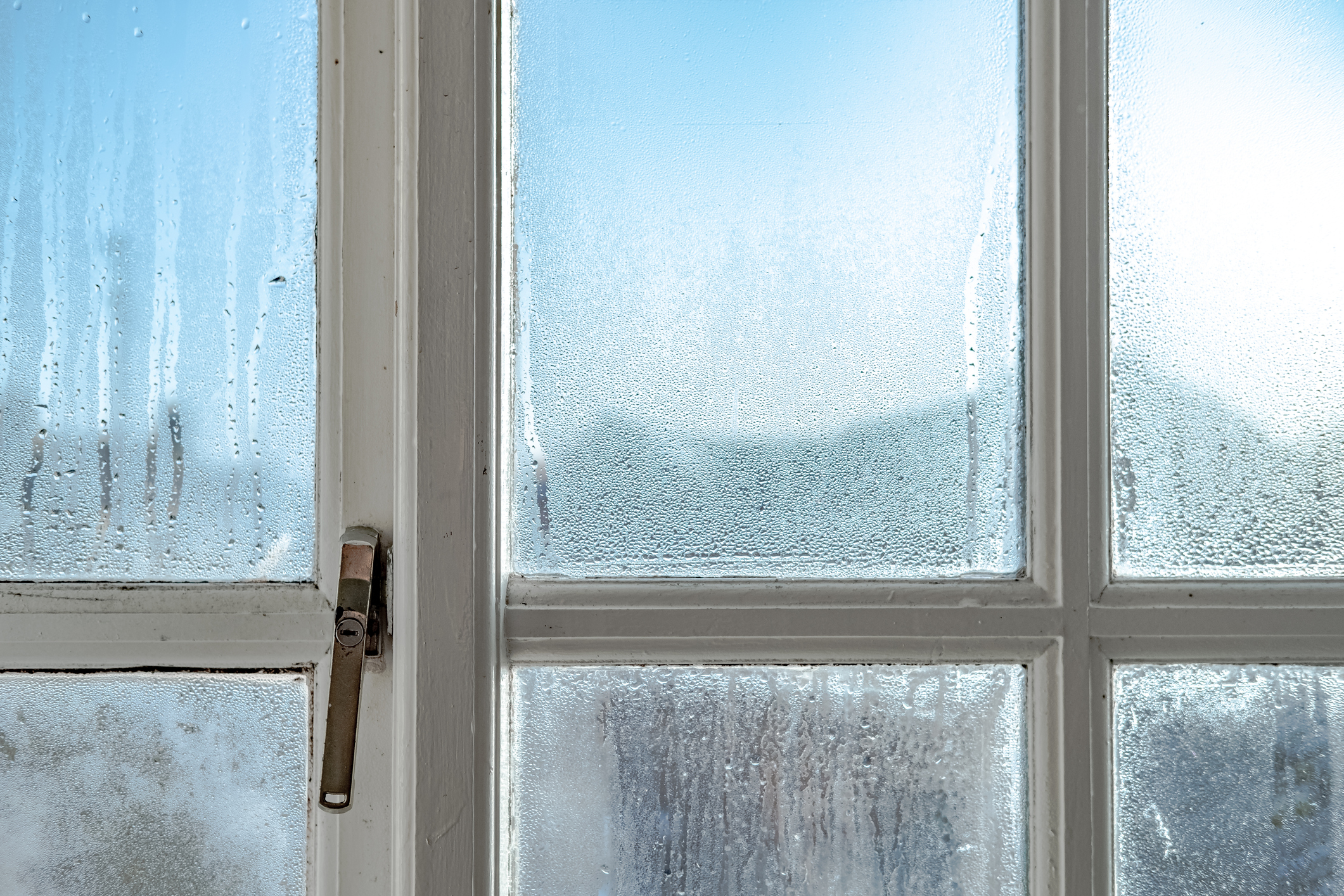
The Number of Window Panes Matter
Single-Pane Window
A single pane window with no insulation will almost always have condensation, because it is does not keep the temperature of the inside window surface similar to the temperature in the home.
Double-Pane Windows
Some double-pane windows will have condensation problems if they are poor quality, poorly insulated, installed improperly, or made with subpar materials.
What Causes Window Condensation?
In your home, condensation could be coming from many sources.
Windows can become steamy on the inside when the indoor temperature is higher than the outdoor temperature. Even things such as cooking, taking a shower, doing laundry, or having a large gathering can quickly raise the indoor temperature leading to moisture on windows.
Condensation Causes:
-
Sudden changes in weather
-
New construction, plants, aquariums may increase moisture
-
Poor quality, uninsulated widows
-
Shape of the window (bay or bow windows are more susceptible to condensation)
-
Excess humidity in the home
Do All Windows Get Condensation?
All windows develop condensation under some situations, just like your mirror or shower steam up after a hot shower.
However, the better the insulating value of the window, the higher the temperature of the inside glass surface will be, and the less likely condensation will occur.
The more window panes, the more insulation. Both Double and Triple Pane windows have increased insulating value than single pane.
Additionally, adding an insulating gas such as Argon or Krypton increases insulation between the glass and prevents cold from getting between the window glass.
Fog Resistant Windows
Window Depot KC’s triple pane windows have enhanced condensation resistance. They are given a NFRC Condensation Resistance of 73. This means that replacing single pane windows with our triple pane window can reduce condensation up to 56%! They can even improve double-pane Low E windows by over 20%.
Is Steam on Your Windows Always a Bad Sign?
Occasional condensation on your windows can be harmless.
If the kitchen windows only fog up when you make dinner or pull out the dishes from the dishwasher, you can blame the sudden increase in wet, warm air.
The same goes for the rest of the house. When there is a large difference between indoor and outdoor temperatures, windows will condensate and get foggy.
It could also be a sign you have a well-insulated home that doesn’t let warm air out in the winter or cool air out in the summer.
When is Condensation a Serious Problem?
It’s time to take action when the fog on your windows is alerting you to a serious problem.
Some signs to look for indicating there is a bigger problem:
- Broken or leaky seals
- Moisture between the panes of glass. When this happens, you will notice fog on your windows but you won’t be able to wipe it off.
- Standing water or mold in window wells
- Rotting wood and sills
Take Action!
Windows that seem to stay foggy no-matter-what is alarming.
You may even notice that you can’t seem to wipe the fog away. In these cases, the fog is happening between the panes of glass and will give your windows a cloudy, milky appearance.
This is usually caused because the seal between the panes has failed and the insulating gas has escaped. This allows moisture between the panes of glass.
This is a problem a professional should fix right away.
Your windows can provide the first warning that something is threatening the health and appeal of your home.
If you have windows in your home that remain foggy don’t hesitate to call a skilled professional to assess what your home needs.

Ways to Decrease Humidity in Your Home
1. Make sure there is enough ventilation for high humidity rooms such as kitchen and bathroom.
2. Use ceiling and exhaust fans.
3. Open window dressings during daytime to prevent condensation build up.
4. Adjust or stop using humidifier (if in use).
5. Consider a dehumidifier to remove excess moisture.





